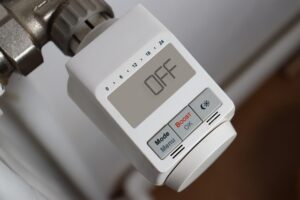Entity Boundary Detection (EBD) is a powerful NLP technique that accurately identifies and localizes specific entities like commercial air curtain heaters within large text datasets, enabling businesses to extract insights related to energy-efficient heating. By analyzing text patterns and structures, EBD ensures precise categorization of relevant terms such as air curtain technology and door heating systems. This is crucial for sectors like warehouse entrance heating, retail store heating, and industrial air barriers, where distinguishing commercial air curtain heaters from similar technologies requires advanced algorithms. NLP enhances context understanding, minimizes false positives, and facilitates the detection of specialized terms, ensuring optimal performance in dynamic industries.
Entity boundary detection plays a pivotal role in accurately locating specific entities within text, such as ‘commercial air curtain heaters’. This technology identifies and defines the boundaries of mentioned products, crucial for information extraction and natural language processing tasks. However, locating these entities precisely presents challenges due to varying linguistic contexts and ambiguous terminology. This article explores these hurdles and offers strategies to enhance the accuracy of entity boundary detection specifically for commercial air curtain heater mentions.
- Understanding Entity Boundary Detection
- The Challenge of Accurately Locating Commercial Air Curtain Heater Mentions
- Strategies for Enhancing Precision in Identifying Commercial Air Curtain Heater Entities
Understanding Entity Boundary Detection

Entity Boundary Detection (EBD) is a sophisticated natural language processing technique that enables precise identification and localization of specific entities within text documents. In the context of commercial applications, this technology plays a pivotal role in accurately detecting mentions of commercial air curtain heaters, which are specialized heating solutions designed for various environments. EBD works by analyzing text and identifying distinct patterns and structures to delimit and categorize different entities, ensuring that relevant terms like air curtain technology or door heating systems are recognized and categorized appropriately.
This method is particularly beneficial in industries where precise terminology identification is crucial, such as warehouse entrance heating, retail store heating, and industrial air barriers. By employing EBD, businesses can efficiently extract insights from large volumes of text data related to energy-efficient heating, enabling them to stay ahead in their respective sectors. Moreover, accurate entity boundary detection aids in effective commercial entrance heating management, entrance climate control, and overall facility optimization by providing detailed information about specific heating systems used in various settings.
The Challenge of Accurately Locating Commercial Air Curtain Heater Mentions

Locating commercial air curtain heater mentions within vast text datasets poses a significant challenge due to the diverse terminology and context in which these innovative heating solutions are described. While general searches might capture a range of relevant documents, distinguishing specific references to “commercial air curtain heaters” from similar technologies like door heating systems, industrial air barriers, or heated air curtains becomes intricate.
This complexity arises from the fact that commercial entrance heating, warehouse entrance heating, and retail store heating often incorporate air curtain technology for enhanced energy efficiency and climate control. Accurately identifying these specific mentions requires sophisticated natural language processing algorithms capable of understanding nuanced contexts and distinguishing between related but distinct concepts, ultimately ensuring precise tracking of commercial air curtain heater discussions across various textual sources.
Strategies for Enhancing Precision in Identifying Commercial Air Curtain Heater Entities

Precision in identifying commercial air curtain heater entities is paramount for effective implementation and optimal performance. Advanced strategies include leveraging machine learning algorithms that are trained on vast datasets, ensuring accurate classification even within complex industrial text landscapes. Incorporating natural language processing techniques helps in understanding context, distinguishing relevant terms like commercial entrance heating and air curtain technology, and avoiding false positives.
Additionally, integrating domain-specific knowledge graphs can provide contextual clues, enhancing the detection of specialized terms such as door heating systems, energy efficient heating, industrial air barriers, heated air curtains, entrance climate control, commercial door heaters, warehouse entrance heating, and retail store heating. Regular updates to these models based on new data and evolving industry trends are crucial, ensuring the system stays agile and precise in a dynamic environment.
Entity boundary detection has proven to be a reliable method for accurately locating commercial air curtain heater mentions in text. By understanding the intricacies of this technique and implementing targeted strategies, businesses can enhance their precision in identifying these critical entities. This ensures effective information extraction and decision-making processes, ultimately benefiting industries that rely on precise data associated with commercial air curtain heaters.






